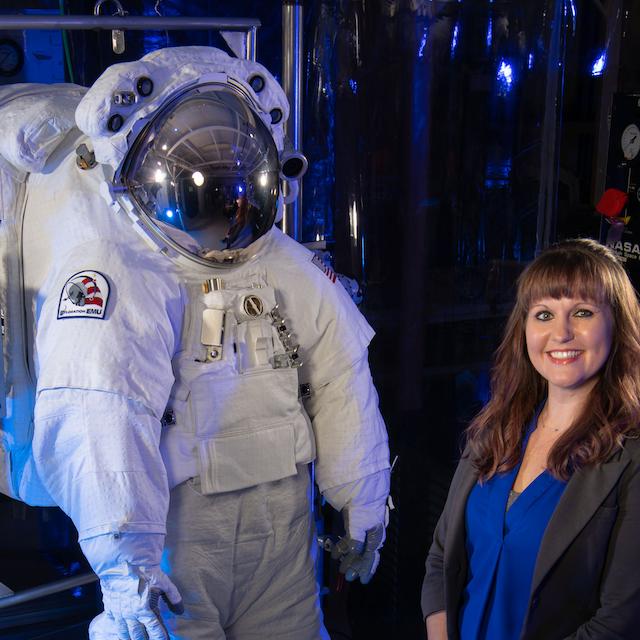
Game Changer: TCU ‘Poised to Lead’ in Athletic Textile Research
Reuben Burch, TCU’s vice provost for research, was telling a story of a National Science Federation grant he had applied for years ago in the wearable tech space.
There was a single line, on Page 15: “… and we will embed sensors into textile materials.”
“The first part took three months, the other six years,” Burch said. “So I appreciate all you do and what you bring to science.”
He told this story in his welcome to the NC-170 Annual Research Meeting on Personal Protective Technologies for Current and Emerging Occupational and Environmental Hazards, hosted by TCU and its College of Fine Arts. Researchers from leading universities came to Fort Worth to collaborate on the next breakthroughs in protective equipment for health care, military, industrial and athletic uses.
Protective equipment is already a big player in athletics, and TCU is prepared to tackle research and innovation in the athletic and human performance space in a big way.
“Protective equipment is both science and art — it must perform flawlessly and still fit the human who wears it,” said Lori Motes ’06, an engineer at NASA’s Lyndon B. Johnson Space Center and keynote speaker for the conference. “That dual challenge is exactly why TCU is poised to lead: It fosters collaboration across research and the creative arts, and that’s where the breakthroughs happen.”
Motes understands breakthroughs, overseeing a $90 million engineering and technology program focused on designing, testing and developing environmental control/life support systems and active thermal control systems for spacecraft and crew, as well as crew equipment and spacesuits for extravehicular activities and other hazardous environments.
What do astronauts, as well as health care professionals and agricultural workers, have in common with athletes? The gear that keeps them safe holds the key to the next big leap in athletic performance. This intersection informed Burch’s creation of the Athlete Engineering Institute at Mississippi State University and is a big focus for research in TCU’s College of Fine Arts.
“TCU is implementing a strategy to grow its leadership in textiles research, with opportunities that support athletic performance, enhance safety and create new opportunities for students and faculty,” said Charles Freeman, chair of the Department of Fashion Merchandising. Freeman, along with Instructor II Leslie Browning-Samoni, will represent Texas in this national initiative.
This aligns with leadership making research a core pillar of TCU’s Strategic Plan and prioritizing achieving Research One and Association of American Universities status.
The NC-170 conference brought researchers from leading institutions in this space, including Auburn, Cornell and Oklahoma State universities, to campus to share insights on enhancing PPE. Participants focused on improving functionality, wearability and usability through advances in textiles, garment design and body scanning and motion capture technologies. This research will also inform TCU’s efforts to explore intersections with athletics, whether through advanced fabrics, wearable technology or protective equipment.
